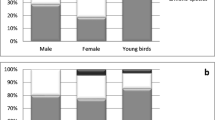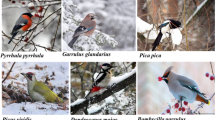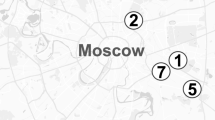Abstract
The occurrence ofCandida albicans in fresh gull (Larus spp.) feces was compared in temperate and subtropical locations. Of 239 fresh samples, 133 were obtained in southeastern Connecticut and 106 from different sites on the southeastern and central western coasts of Florida. Overall, 60% of all feces containedC. albicans. Of the Connecticut samples, 78% were positive, whereas 38% of the Florida samples revealed the presence of the yeast. Only 1 of 24 samples of fresh brown pelican feces containedC. albicans. Differences inC. albicans occurrence in birds in various locations was ascribed to variations in habitat and feeding behavior. Samples of water from a municipal reservoir in Connecticut were routinely positive, with an average cell density of 20/liter. Two fresh gull samples obtained on the reservoir bank containedC. albicans at an average cell concentration of 5, 200/g. The frequency ofC. albicans in gull droppings was higher than reported by others, and the yeast is common in temperate waters. These findings have important public health implications.
Similar content being viewed by others
References
Ahearn DG (1973) Effects of environmental stress on aquatic yeast populations. In: Stevenson LH, Colwell RR (ed) Estuarine microbial ecology, University of South Carolina Press, Columbia, pp 443–439
Asper ED, Odell DK (1980) Bottlenose dolphin local herd monitoring: captive marking, collection of biological data, and follow-up observations of marked animals. Hubbs/Sea World Research Institute Tech Rept No 80-122, Orlando, Florida
Berg RW, Anderson AW (1972) Salmonellae andEdwardsiella tarda in gull feces: a source of contamination in fish processing plants. Appl Microbiol 24: 501–503
Buck JD (1977)Candida albicans. In: Hoadley AW, Dutka BJ (ed) Bacterial indicators/health hazards associated with water, ASTM STP 635, American Society for Testing and Materials, Philadelphia, pp 139–147
Buck JD (1980) Occurrence of human-associated yeasts in the feces and pool waters of captive bottlenosed dolphins (Tursiops truncatus). J Wild Dis 16: 141–149
Buck JD, Bubucis PM (1978) Membrane filter procedure for enumeration ofCandida albicans in natural waters. Appl Environ Microbiol 35: 237–242
Buck JD, Bubucis PM, Combs TJ (1977) Occurrence of human-associated yeasts in bivalve shellfish from Long Island Sound. Appl Environ Microbiol 33: 370–378
Cragg J, Clayton YM (1971) Bacterial and fungal flora of seagull droppings in Jersey. J Clin Pathol 24: 317–319
Dunn JL, Buck JD, Spotte S (1982) Candidiasis in captive cetaceans. J Am Vet Med Assoc 181: 1317–1321
Fenlon DR (1981) Seagulls (Larus spp.) as vectors of salmonellae: an investigation into the range of serotypes and numbers of salmonellae in gull feces. J Hyg Camb 86: 195–202
Graham F (1980) Gulls — a social history. Random House, New York
Hedden DM, Buck JD (1980) A reemphasis—germ tubes diagnostic forCandida albicans have no constrictions. Mycopathol 70: 95–101
Hussong D, Damare JM, Limpert RJ, Sladen WJL, Weinger RM, Colwell RR (1979) Microbial impact of Canada geese (Branta canadensis) and whistling swans (Cygnus columbianus columbianus) on aquatic ecosystems. Appl Environ Microbiol 38: 14–20
Kawakita S, van Uden N (1965) Occurrence and population densities of yeast species in the digestive tracts of gulls and terns. J Gen Microbiol 39: 125–129
Medway W (1980) Some bacterial and mycotic diseases of marine mammals. J Am Vet Med Assoc 177: 831–834
Monaghan P (1980) Dominance and dispersal between feeding sites in the herring gull (Larus argentatus). Anim Behav 28: 521–527
Moss B, Leah RT, Forrest DE (1978) Ecosystem experimentation in the management of a system of shallow lakes. Verh Intern Verein Limnol 20: 649–653
Odds FC (1979) Candida and candidosis. Leicester University Press, Leicester, England
Rippin JW (1974) Medical mycology. The pathogenic fungi and the pathogenic actinomycetes. WB Saunders, Philadelphia
Standridge JH, Delfino JJ, Kleppe LB, Butler R (1979) Effect of waterfowl (Anas platrhynchos) on indicator bacteria populations in a recreational lake in Madison, Wisconsin. Appl Environ Microbiol 38: 537–550
van Uden N, Castelo Branco R (1963) Distribution and population densities of yeast species in Pacific water, air, animals, and kelp off southern California. Limnol Oceanogr 8: 323–329
Wood AJ, Trust TJ (1972) Some qualitative and quantitative aspects of the intestinal microflora of the glaucous-winged gull (Larus glaucescens). Can J Microbiol 18: 1577–1583
Author information
Authors and Affiliations
Additional information
Contribution No. 154 from the University of Connecticut, Marine Research Laboratory.
Rights and permissions
About this article
Cite this article
Buck, J.D. Occurrence ofCandida albicans in fresh gull feces in temperate and subtropical areas. Microb Ecol 9, 171–176 (1983). https://doi.org/10.1007/BF02015129
Issue Date:
DOI: https://doi.org/10.1007/BF02015129




